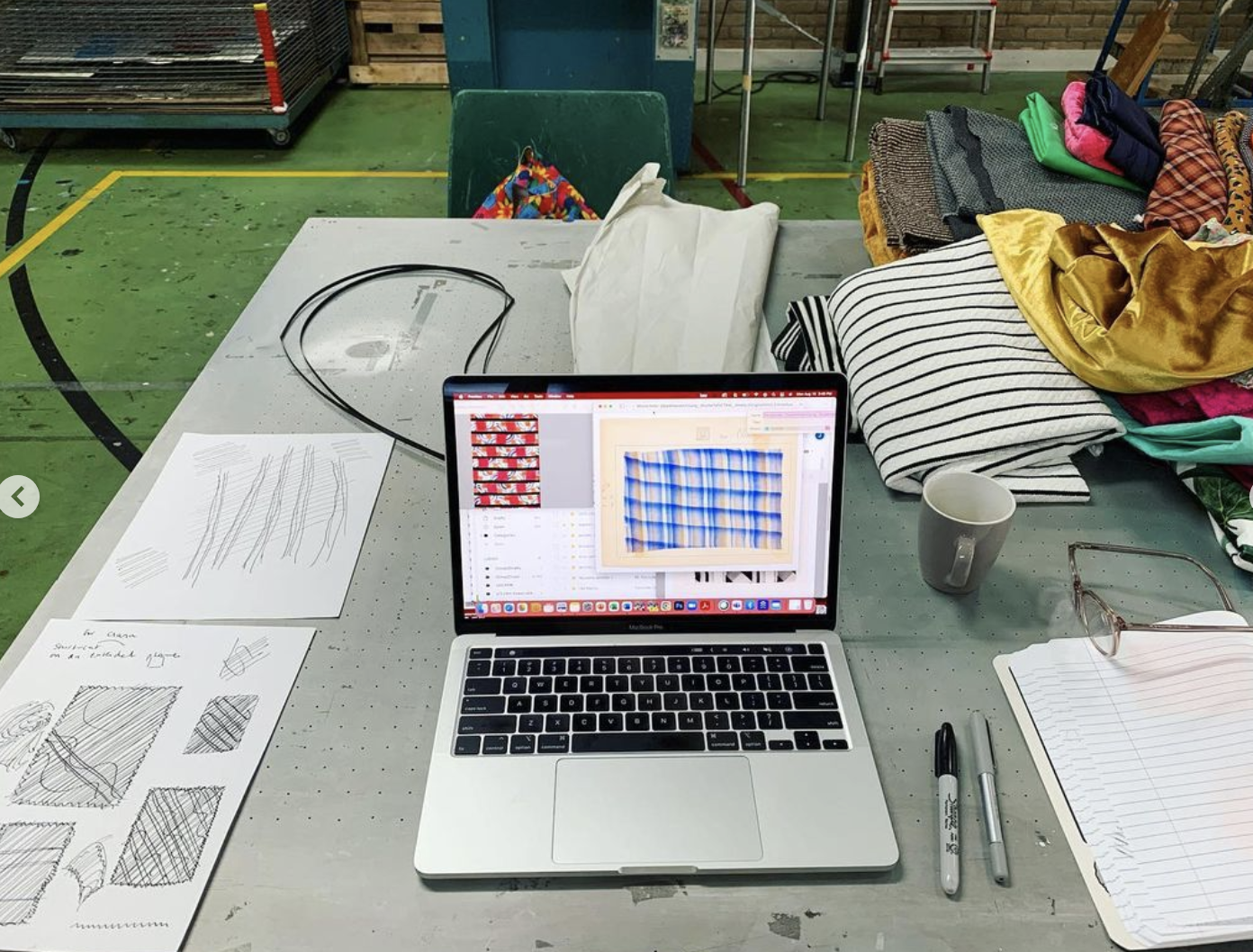This summer Jennifer Schmidt was our artist in residence for a month. Jennifer teaches at SMFA at Tufts University in Boston, and came to us from New York especially to work on the famous large AGA LAB screen printing textile table. It was a very pleasant and inspiring encounter for many AGA LAB employees and other artists who have a studio in the Bouw Broedplaats.
We asked about Jennifer’s experiences and the work process during the residency:
‘I enjoyed being able to dry my screen outside in the courtyard and sit in the sun. I loved meeting other artists in the Bouw building while eating in the kitchen, hanging out, and in the studio. The community is wonderful. Relaxed. Yet, productive. Waking up the sound of people entering the building to go to their studios, helped motivate me to get out of bed, after staying up really late to work. I could smell coffee in my room from the kitchen.’
‘I knew I wanted to work at AGA in Amsterdam after going to Vienna to do more research in person… because I wanted to work on design motifs and printed posters in a city that values design and contemporary abstraction in particular. Design is part of the culture in Amsterdam and the Netherlands. The repetition of modular forms is everywhere and appreciated. Situating the production and design of my work within this – was conceptually important. It was also important to consider Amsterdam as a center of exchange, trade and manufacturing / copying. The Dutch are masters at appropriating technologies and developing them further.’
I enjoyed being able to dry my screen outside in the courtyard and sit in the sun. I loved meeting other artists in the Bouw building while eating in the kitchen, hanging out, and in the studio.
‘I chose screenprinting as a way to print graphics on textiles, to play with layering a design using transparent cyan on top of pre-exisiting colors and motifs. Screenprinting was important to what I was doing. Related to poster printing, fabric printing, and the history of fabric finishing and printing involving the fabric swatches I was citing, with Clara Posnanski.’
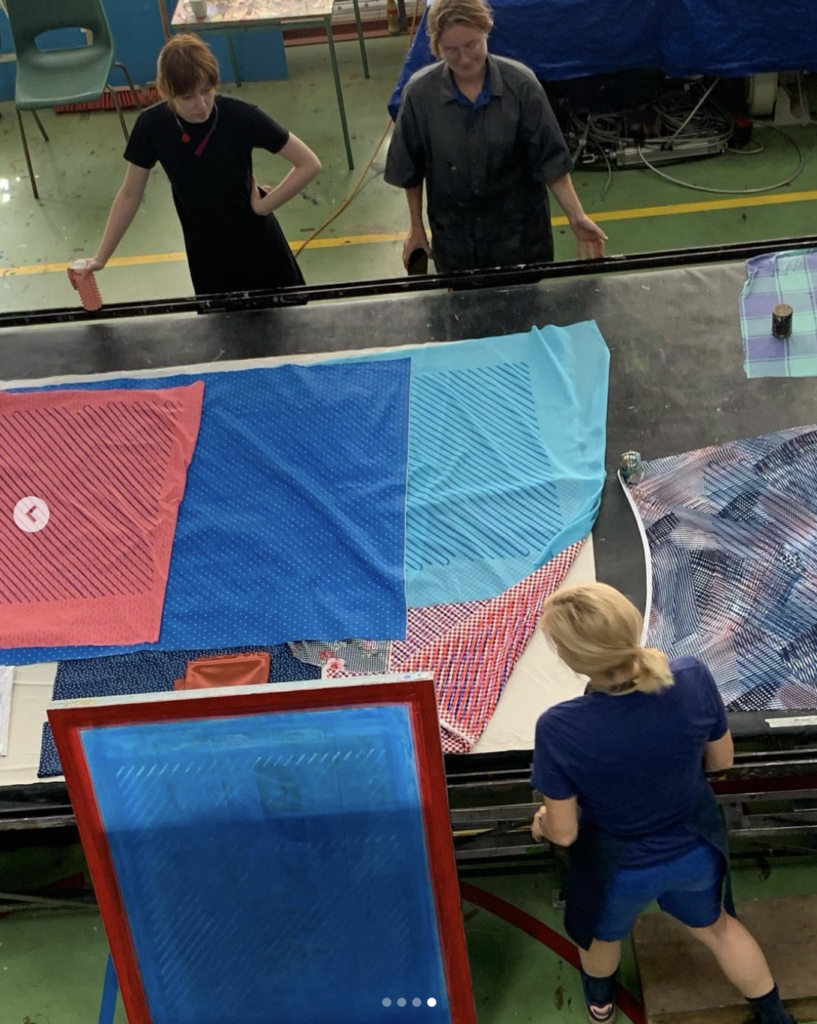

‘I intended to create screenprinted posters on fabric using graphics related to Feminism and the role of women — as a trajectory — printing and designing as part of the Wiener Werkstatte. I knew I was inspired by their design style, and had already discovered fabric swatches in museum collections – that I was visually thinking about. Especially the labeling and provenance of the swatches involving individual women artist/designer/printer identity. However, I had yet to really dive into my research and learn more specifics for me to create a transformative project that involved thinking about the role of the individual, economies of design, and the role of Clara Posnansky as a printer, artist, designer – who skillfully was able to create her work at all stages. The titling and archiving of Clara’s fabric swatches in museum collections was the main impetus for everything I did at AGA LAB. Her designs were labeled with people’s names like “Paul”. She printed her samples with her own hands using screenprinting. Her birth and death date were the same.’
I enjoyed learning about the sticky large format textile printing table! As well as, wooden squeegees for printing! I have never seen either before.. And am a convert! I was really surprised and psyched to see so many people coming to AGA to print on textiles for their projects.’
‘At De Bouwput, I was able to position and display the works within the space as an ongoing action.’
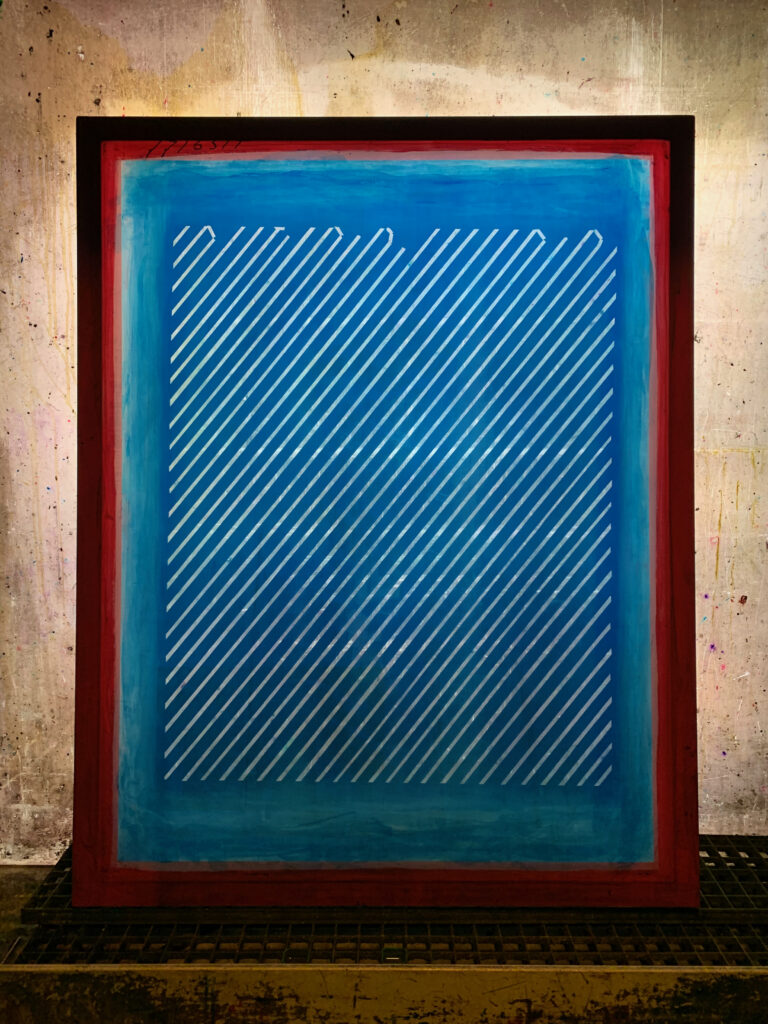

‘Being able to show my work in De Bouwput Galerie was invaluable. I produced many prints on fabric to show individually and as part of an installation. There is a finishing process to preparing the fabric that involves trimming the fabric with pinking shears to create posters. Perhaps, attaching fabric labels with printed text. Those things cannot be rushed in terms of craft. However, the process of doing so, and playing with the fabric as visual material within a space is part of the concept. At De Bouwput, I was able to position and display the works within the space as an ongoing action. The fabric as material and the repeat of the stripes became a question of intent and use. It was great to be able to visually figure out relationships through touch and placement. Knowing the mini show was an experiment, a performative action, evolving in time. I let the fabric as material become the guide for what could happen.’
Thank you Jennifer for all your energy, your advice, your fun and your blue stripes! Hope to meet again.
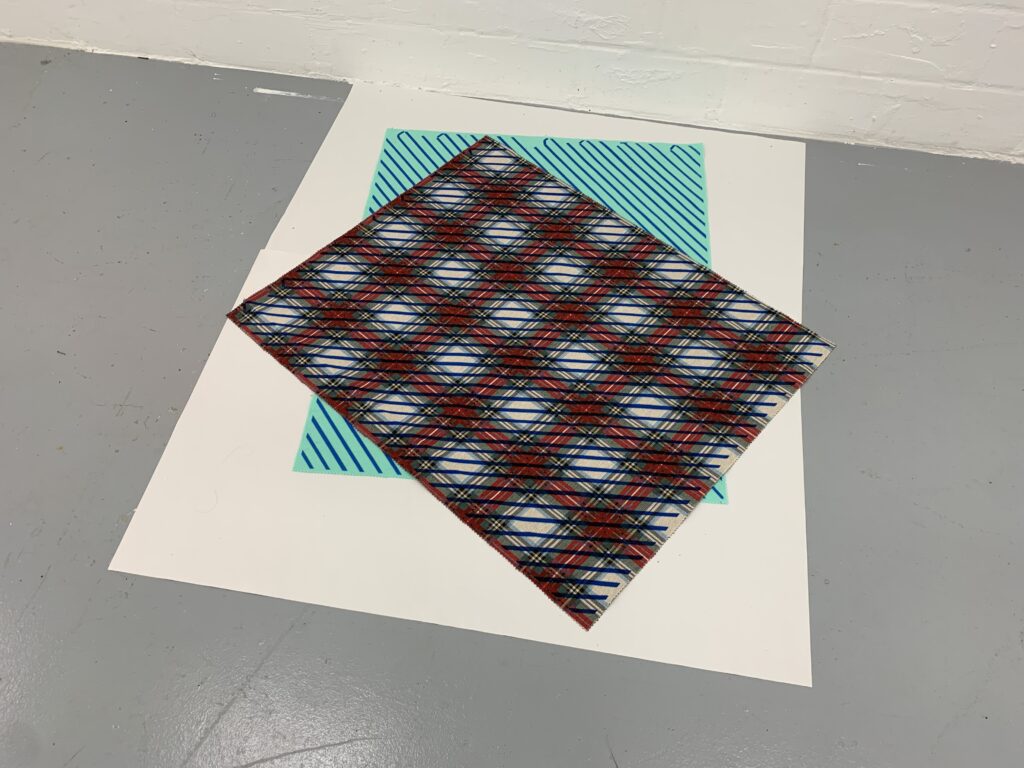
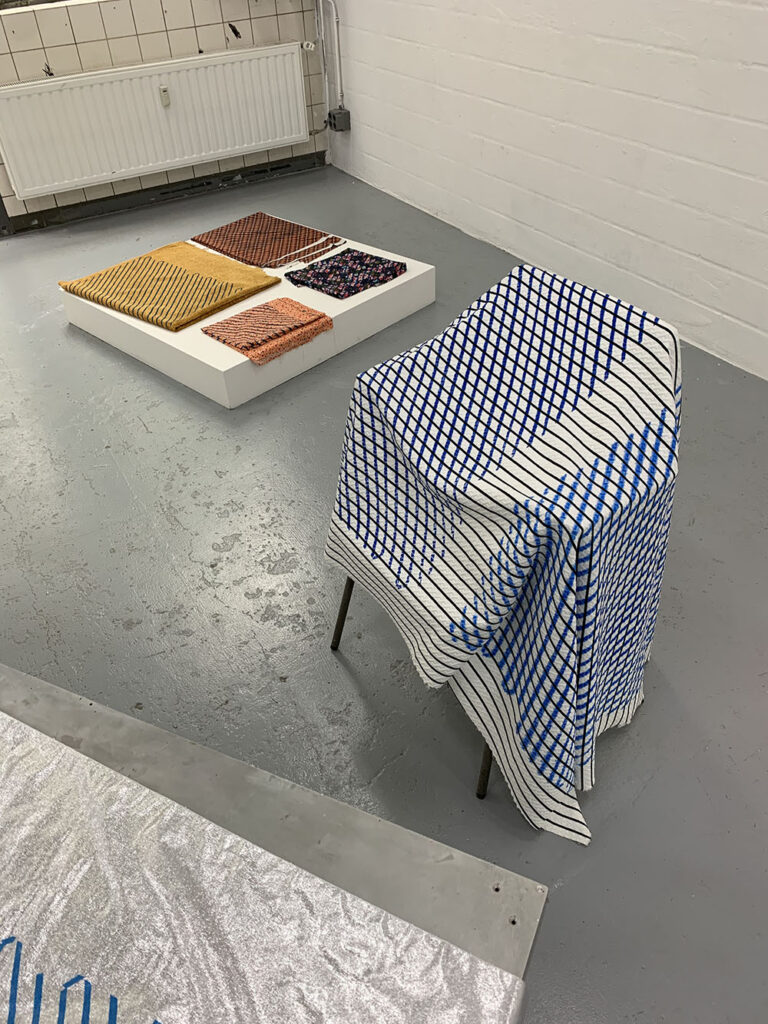
More work can be found on:
@jenniferannschmidt
&
www.jenniferschmidt.com

